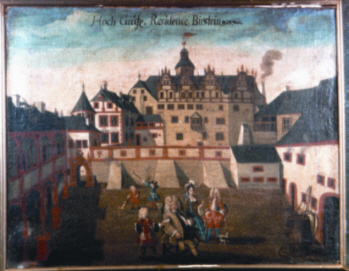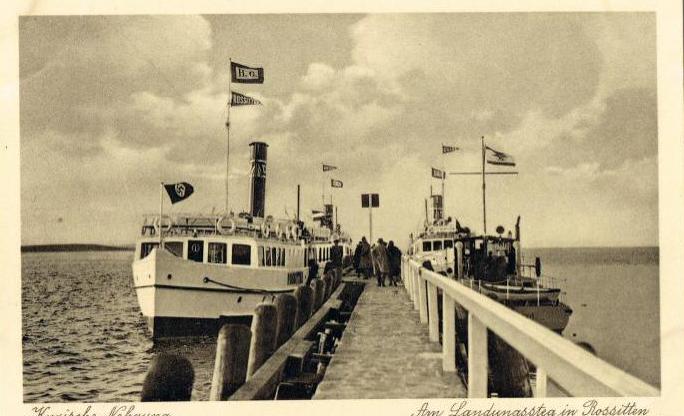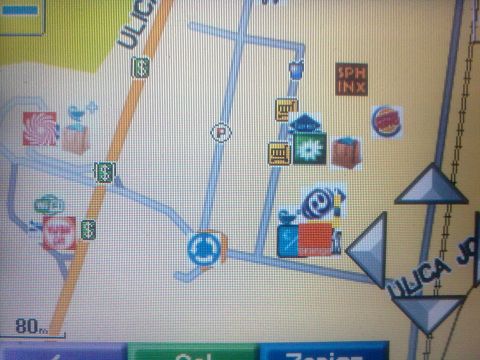|
Brachttal
Brachttal is a municipality in the Main-Kinzig district, in Frankfurt Rhine-Main in Hesse, Germany. Districts The Bracht, a tributary of the Kinzig, flows through the ''Tal'' (valley) so the municipality got the name ''Brachttal.'' Brachttal consists of six parts: * Schlierbach * Neuenschmidten * Hellstein * Spielberg * Udenhain * Streitberg Schlierbach is the biggest part of Brachttal and also the most people live there. The administration and the tourist information of Brachttal (Gemeindeverwaltung Brachttal) are located in Schlierbach. Schlierbach is well known for its ceramic manufacture, the '' Waechtersbach ceramics''. Next to the manufacture there is a tegut-market, the only supermarket in Brachttal. In Spielberg and Streitberg there are ceramic museums. In Neuenschmidten is ''Schloss Eisenhammer'' and an old big oak with a scope of 7.88 meters (25.853 ft) in 2014. Today the Schloss is empty and it is offered for sale. The famous '' Vogelsberger Südbahnradweg'' ... [...More Info...] [...Related Items...] OR: [Wikipedia] [Google] [Baidu] |
Waechtersbach Ceramics
Waechtersbach ceramics is a German ceramics manufacturer in Brachttal near Wächtersbach, which was founded in 1832 by the Prince Adolf of Ysenburg and Büdingen of Isenburg-Wächtersbach. It is a registered company since 4 July 2003. History During the early 20th century, Waechtersbach introduced Art Nouveau style ceramics. It made works designed by Joseph Maria Olbrich, Peter Behrens, Hans Christiansen and also worked for the Darmstadt Artists' Colony. * In 2006, it became part of the Könitz Porzellan company. * In 2011, it was closed. * Since 2013, there is a show production for interested people. * In Spielberg and Streitberg (both are villages in Brachttal Brachttal is a municipality in the Main-Kinzig district, in Frankfurt Rhine-Main in Hesse, Germany. Districts The Bracht, a tributary of the Kinzig, flows through the ''Tal'' (valley) so the municipality got the name ''Brachttal.'' Brachttal ...) there are ceramic museums with ceramic art made by Waechtersbach cer ... [...More Info...] [...Related Items...] OR: [Wikipedia] [Google] [Baidu] |
Wächtersbach Station
Wächtersbach station is a station in the town of Wächtersbach in the German state of Hesse on the Kinzig Valley Railway (german: Kinzigtalbahn). The former Bad Orb Light Railway (''Bad Orber Kleinbahn'') branches off at the station. It was originally standard gauge, but has been converted to narrow gauge. The Vogelsberg Southern Railway (''Vogelsberger Südbahn'') also used to branch off here to Hartmannshain (in the municipality of Grebenhain) via Birstein. The station is classified by Deutsche Bahn (DB) as a category 4 station. History The station was opened on 1 May 1867 along with the Hanau–Waechtersbach section of the Frankfurt–Bebra railway. The Wächtersbach–Birstein section of the Vogelsberg Southern Railway was opened on 30 June 1898 by the Wächtersbach-Birstein Light Railway Company (''Wächtersbach-Birsteiner Kleinbahn-Gesellschaft''). The Birstein-Hartmannshain section was opened on 23 December 1934. The Vogelsberg Southern Railway was closed on 27 May 196 ... [...More Info...] [...Related Items...] OR: [Wikipedia] [Google] [Baidu] |
Birstein
Birstein is a municipality on the northeastern edge of the Main-Kinzig-Kreis in Hesse, Germany with approximately 6,600 inhabitants. It was the home of the former principality of Isenburg-Birstein. Geography Location The town lies at the southern base of the Vogelsberg Mountains. For this reason, and because of the natural beauty of its setting, it is known as the "Pearl of the Vogelsberg". Birstein proper has two sections. The northern part, uphill from the palace, is known as the "Oberberg", while the southern part, where most of the shops and commercial establishments are located, is called the "Unterberg". Neighboring municipalities To the north, Birstein borders on Grebenhain, which lies in the Vogelsbergkreis. On this border is the Völzberger Köpfchen, the highest peak of the area. To the east, its neighbors are Freiensteinau (also in the Vogelsbergkreis) and the town of Steinau an der Straße. Bad Soden-Salmünster and the municipality of Brachttal border it on the so ... [...More Info...] [...Related Items...] OR: [Wikipedia] [Google] [Baidu] |
Rybachy, Kaliningrad Oblast
Rybachy (russian: Рыба́чий, from ''Рыба́к'', "Fisherman", german: Rossitten, pl, Rosity, lt, Rasytė) is a rural settlement in Zelenogradsky District of Kaliningrad Oblast, Russia, located on the Curonian Spit. As of 2010 it has about 839 residents. It was formerly known for the Rossitten Bird Observatory and the Rossitten gliding school. Geography Rybachy is the largest settlement on the Russian side of the Curonian Spit between the Curonian Lagoon and the Baltic Sea, close to the border with Lithuania. It is the administrative seat of the Kurschskaja Kossa (Curonian Spit) municipality. It lies approximately north-east of Zelenogradsk. History A Teutonic ''Ordensburg'' castle on the road from Königsberg to Memel (Klaipėda) was first mentioned in 1372. It had been the site of a Curonian fishing village, named after Old Prussian ''rosit'' ("dew", cf. lt, Rasa). Constantly threatened by coastal dunes the settlement had to be relocated several times until the ... [...More Info...] [...Related Items...] OR: [Wikipedia] [Google] [Baidu] |
Ceramics Museum
A ceramics museum is a museum wholly or largely devoted to ceramics, usually ceramic art. Its collections may also include glass and enamel, but typically concentrate on pottery, including porcelain. Most national collections are in a more general museum covering all of the arts, or just the decorative arts. However, there are a number of specialized ceramics museums, with some focusing on the ceramics of just one country, region or manufacturer. Others have international collections, which may be centered on ceramics from Europe or East Asia or have a more global emphasis. Outstanding major ceramics collections in general museums include Collections of the Palace Museum#Ceramics, The Palace Museum, Beijing, with 340,000 pieces, and the National Palace Museum in Taipei city, Taiwan (25,000 pieces); both are mostly derived from the Chinese Imperial collection, and are almost entirely of pieces from China. In London, the Victoria and Albert Museum (over 75,000 pieces, mostly afte ... [...More Info...] [...Related Items...] OR: [Wikipedia] [Google] [Baidu] |
Main-Kinzig
Main-Kinzig-Kreis is a Kreis (district) in the east of Hesse, Germany. Neighboring districts are Wetteraukreis, Vogelsbergkreis, Fulda, Bad Kissingen, Main-Spessart, Aschaffenburg, Offenbach and the district-free cities of Offenbach and Frankfurt. History The district was created in 1974 by merging the former districts of Hanau, Schlüchtern, Gelnhausen and the former urban district of Hanau. It is basically the former territory of the county of Hesse-Hanau. Geography The district is named after the two primary rivers: the Main flows along the south-west corner of the district. The Kinzig, a tributary of the Main, flows through the district. According to the ''Institut Géographique National'' from 1 January 2007 until July 2013 the geographic centre of the European Union was located on a wheat field outside of Gelnhausen. Economy In 2017 (latest data available) the GDP per inhabitant was €34,185. This places the district 15th out of 26 districts (rural and urban) in Hesse ... [...More Info...] [...Related Items...] OR: [Wikipedia] [Google] [Baidu] |
Wächtersbach
The town of Wächtersbach is part of the Main-Kinzig-Kreis in Hesse, Germany. In 1982, the town hosted the 22nd ''Hessentag'' state festival. Location Wächtersbach lies between the Spessart and the Vogelsberg Mountains in the middle Kinzig valley at the edge of the Büdingen Forest, not far from the towns of Gelnhausen, Birstein, Bad Orb and Bad Soden-Salmünster. Neighbouring communities To the north, Wächtersbach borders on the communities of Kefenrod (Wetteraukreis) and Brachttal. To the east it abuts the town of Bad Soden-Salmünster, and in the south the town of Bad Orb and the community of Biebergemünd. In the west it borders the community of Gründau. Economy Wächtersbach is well known for its retail fair, the ''Wächtersbacher Messe'', held yearly for end customers in the week around Ascension Day. Retail business and the electrical engineering industry underpin the town's economic life. Over the last few years, many shops have located in Wächtersbach bringin ... [...More Info...] [...Related Items...] OR: [Wikipedia] [Google] [Baidu] |
Hessisches Statistisches Landesamt ...
The statistical offices of the German states (German: ''Statistische Landesämter'') carry out the task of collecting official statistics in Germany together and in cooperation with the Federal Statistical Office. The implementation of statistics according to Article 83 of the constitution is executed at state level. The federal government has, under Article 73 (1) 11. of the constitution, the exclusive legislation for the "statistics for federal purposes." There are 14 statistical offices for the 16 states: See also * Federal Statistical Office of Germany References {{Reflist Germany Statistical offices Germany Germany,, officially the Federal Republic of Germany, is a country in Central Europe. It is the second most populous country in Europe after Russia, and the most populous member state of the European Union. Germany is situated betwe ... [...More Info...] [...Related Items...] OR: [Wikipedia] [Google] [Baidu] |
Point Of Interest
A point of interest (POI) is a specific point location that someone may find useful or interesting. An example is a point on the Earth representing the location of the Eiffel Tower, or a point on Mars representing the location of its highest mountain, Olympus Mons. Most consumers use the term when referring to hotels, campsites, fuel stations or any other categories used in modern automotive navigation systems. Users of a mobile device can be provided with geolocation and time aware POI service that recommends geolocations nearby and with a temporal relevance (e.g. POI to special services in a ski resort are available only in winter). The term is widely used in cartography, especially in electronic variants including GIS, and GPS navigation software. In this context the synonym waypoint is common. A GPS point of interest specifies, at minimum, the latitude and longitude of the POI, assuming a certain map datum. A name or description for the POI is usually included, and oth ... [...More Info...] [...Related Items...] OR: [Wikipedia] [Google] [Baidu] |
Rhein-Main-Verkehrsverbund
The Rhein-Main-Verkehrsverbund (RMV) is a transport association that covers the public transport network of the Frankfurt Rhine-Main area in Germany. Its head office is located in Hofheim im Taunus. Organisation and area covered The RMV is a transportation association operated by 15 counties, 11 independent cities and the Bundesland of Hesse. It was founded 25 May 1995, as the successor of the ''Frankfurter Verkehrsverbund'' (FVV), which was incorporated into the RMV. It is responsible for planning, organising and financing of regional transport, alongside the local transportion organisations. This way, there is a clear distinction between the RMV "ordering" public transport and transport companies carrying it out. As of 2018 there were over 160 transport companies active in the responsible area. [...More Info...] [...Related Items...] OR: [Wikipedia] [Google] [Baidu] |
Grebenhain
Grebenhain is a municipality in the Vogelsbergkreis in Hesse, Germany. Geography Location The municipality of Grebenhain lies from 400 to 733 m above sea level in the southeastern Vogelsberg Mountains, about 30 km west of Fulda. Neighbouring communities Grebenhain borders in the north on the town of Herbstein, in the east on the community of Hosenfeld (Fulda district), in the south on the communities of Freiensteinau and Birstein (Main-Kinzig-Kreis), in the southwest on the town of Gedern (Wetteraukreis), and in the west on the town of Schotten. Constituent communities The municipality consists of 15 centres named Bannerod, Bermuthshain, Crainfeld, Grebenhain (administrative seat), Hartmannshain, Heisters, Herchenhain, Ilbeshausen-Hochwaldhausen, Metzlos, Metzlos-Gehaag, Nösberts-Weidmoos, Vaitshain, Volkartshain, Wünschen-Moos und Zahmen. History The area nowadays occupied by the greater community of Grebenhain in the Vogelsberg was likely settled by waves of settlers f ... [...More Info...] [...Related Items...] OR: [Wikipedia] [Google] [Baidu] |
Vogelsberg Mountains
The is a large volcanic mountain range in the German Central Uplands in the state of Hesse, separated from the Rhön Mountains by the Fulda river valley. Emerging approximately 19 million years ago, the Vogelsberg is Central Europe's largest basalt formation, consisting of a multitude of layers that descend from their peak in ring-shaped terraces to the base. The main peaks of the Vogelsberg are the Taufstein (Vogelsberg), Taufstein, , and Hoherodskopf, , both now within the High Vogelsberg Nature Park. Location The Vogelsberg lies in the county of Vogelsbergkreis, around 60 kilometres northeast of Frankfurt am Main, Frankfurt between the towns of Alsfeld, Fulda, Büdingen and Nidda, Hesse, Nidda. To the northeast is the Knüllgebirge, Knüll, to the east the Rhön, to the southeast the Spessart and to the southwest the low-lying Wetterau, which transitions to the South Hessian lowlands of the Rhine-Main region. In the opposite direction, to the northwest, the Vo ... [...More Info...] [...Related Items...] OR: [Wikipedia] [Google] [Baidu] |


